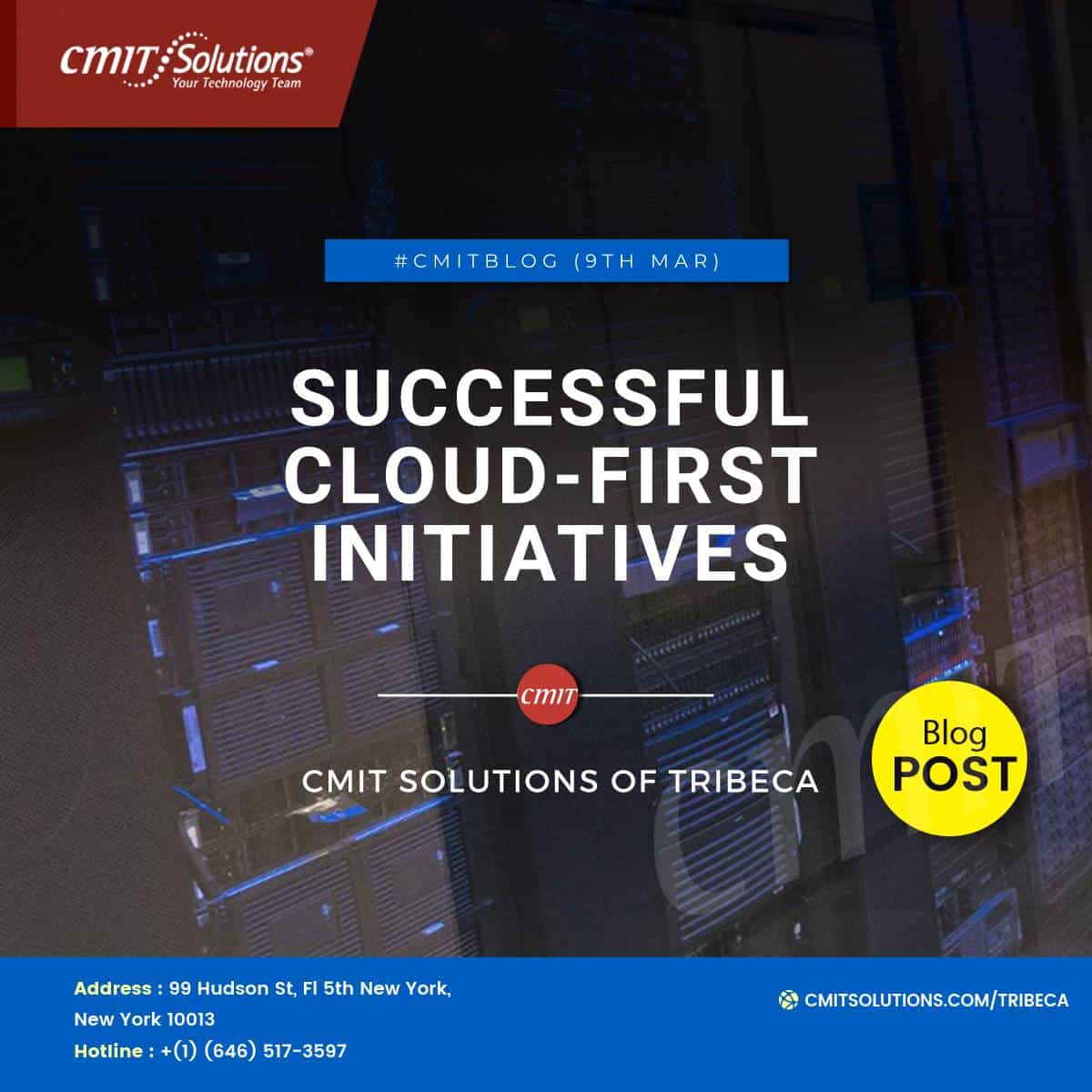Adapting to the cloud by making the most of the cloud. It requires a major transformation in development methodology, organizational mentality, and entire skill set. The “lift and shift” strategy, in which programs and related data are transferred to the cloud without being changed, and the “cloud-first” approach, in which applications are produced or redesigned expressly for the cloud, are the two poles of today’s cloud strategies. Lifting and shifting the whole environment is by far the quickest way while recreating applications for the cloud might take more than two years.
Going cloud-first also known as cloud-native is useful if firms want to develop new features such as customer-centricity or take full advantage of what the cloud has to offer. To identify what their general strategy should be and why they like to go cloud-first, companies must sit down and properly assess their applications and infrastructure. Of fact, many businesses end up using both approaches, some customers see the ‘lift and shift then optimize’ strategy as a feasible way to move their engineers and environments to the cloud sooner, and then optimize [for the cloud] after they’re there.
It often needs tactics that transcend beyond the basic lift and shift of old systems, for firms to provide competitive advantage via disruptive technologies like the cloud. The goal for high speed and quickness to market is a compelling justification for moving critical components of their portfolios to a more cloud-native form factor.
Whether your company is moving cloud-native or combining the two, important strategic transformations are required for cloud-first success, including the following.
Take use of cloud-native ideas
Enterprises should ensure their developers follow well-defined, cloud-native concepts, such as the usage of APIs, microservices, and contemporary data architecture when moving substantial sections of their application portfolios to a cloud-first paradigm. These are only a few of the ideas that developers should keep in mind as they embark on this journey. Moving to the cloud involves the creation of very durable programs. Meeting the end user’s availability needs requires addressing observability in the cloud, adopting and improving your SRE [site reliability engineering] abilities, leveraging chaos testing, and guaranteeing proper resilience testing.
People’s concerns are, of course, a huge component of being cloud-native. Developing, installing, and maintaining cloud-native applications requires a different set of skills than doing so in a data center. Because there is a significant skills gap in the industry currently, upskilling, retraining and recruitment must all be part of a strategic plan.
Change your company’s thinking
To reach the full potential of a cloud-first approach, a company should embrace cloud-native as organizational culture. Companies must adjust their attitude away from conventional waterfall development and toward more agile development approaches such as DevOps and automation.
Cloud-native must be a long-term strategy. Because it is a solution to a wide range of corporate goals, it must be directed by top management. They must also be articulated and implemented by high management. It’s all about changing company models, breaking into new sectors, and quickly adapting to provide new products and services while minimizing time to market.
Create a cloud excellence center
Many businesses may already have a cloud center of excellence (CoE) in place to emphasize what works and prevent what doesn’t. They should if they haven’t already. A cloud CoE is in charge of designing a framework for the organization’s cloud operations, for example.
A cloud center of excellence is the best-practice method to driving cloud-enabled transformation. According to the company, a cloud CoE serves as a consultant for central IT, business-unit IT, and cloud service customers, and helps with tasks such as cloud policy, service provider selection, and cloud architecture and workload allocation.
You may examine your IT infrastructure as well as the people and skillsets you have on staff. If you can establish agile teams that include security, infrastructure support, programming, stakeholders, and so on, you’ll have a complete view of what’s necessary for managing [IT] in the new environment.
Organizations may use the CoE to assist diverse groups in making use of capabilities provided with cloud services that others in the organization are already utilizing, such as backup and disaster recovery.
Make a realistic strategy and a fail-safe skill set
Since the outbreak of the epidemic, it has seemed as though every company has rushed to the cloud and in many situations, this has been the case. This is almost certainly a formula for disaster since it entails taking on too much at once without a long-term strategy and the necessary abilities.
Evaluate your strategy multi-cloud, hybrid, containerization, etc, and make sure you’re breaking things down into manageable chunks. By doing so, you may develop the necessary skill sets and assemble the appropriate teams. Pick one platform at a time and improve your abilities on that platform. Skills must evolve to enable cloud-based apps. Employees may not be aware of all the features built into the cloud platform, or they may be more comfortable with their existing toolsets.
Transforming a current IT workforce into the new cloud environment is not doable. We need new skills and ideas from the outside, he says. Finding the correct blend of abilities is the key to success.
The market consensus, which is generated in part by cloud service providers, is that the cloud can save businesses a lot of money. And, without a doubt, there are many cost reductions to be gained via fewer capital expenditures, cheaper maintenance expenses, and so on. However, this does not negate the necessity for IT businesses to consider how much cloud services cost and what terms make the most sense for keeping costs under control throughout the company.
Decide if you’ll use a flexible fixed-cost structure for the cloud. Do you use show back or chargeback in your business? Also, bear in mind the seasons. You’ll want to know how frequently you’ll scale up and down, as well as what that looks like. It’s critical to develop cost models before putting up a budget.







